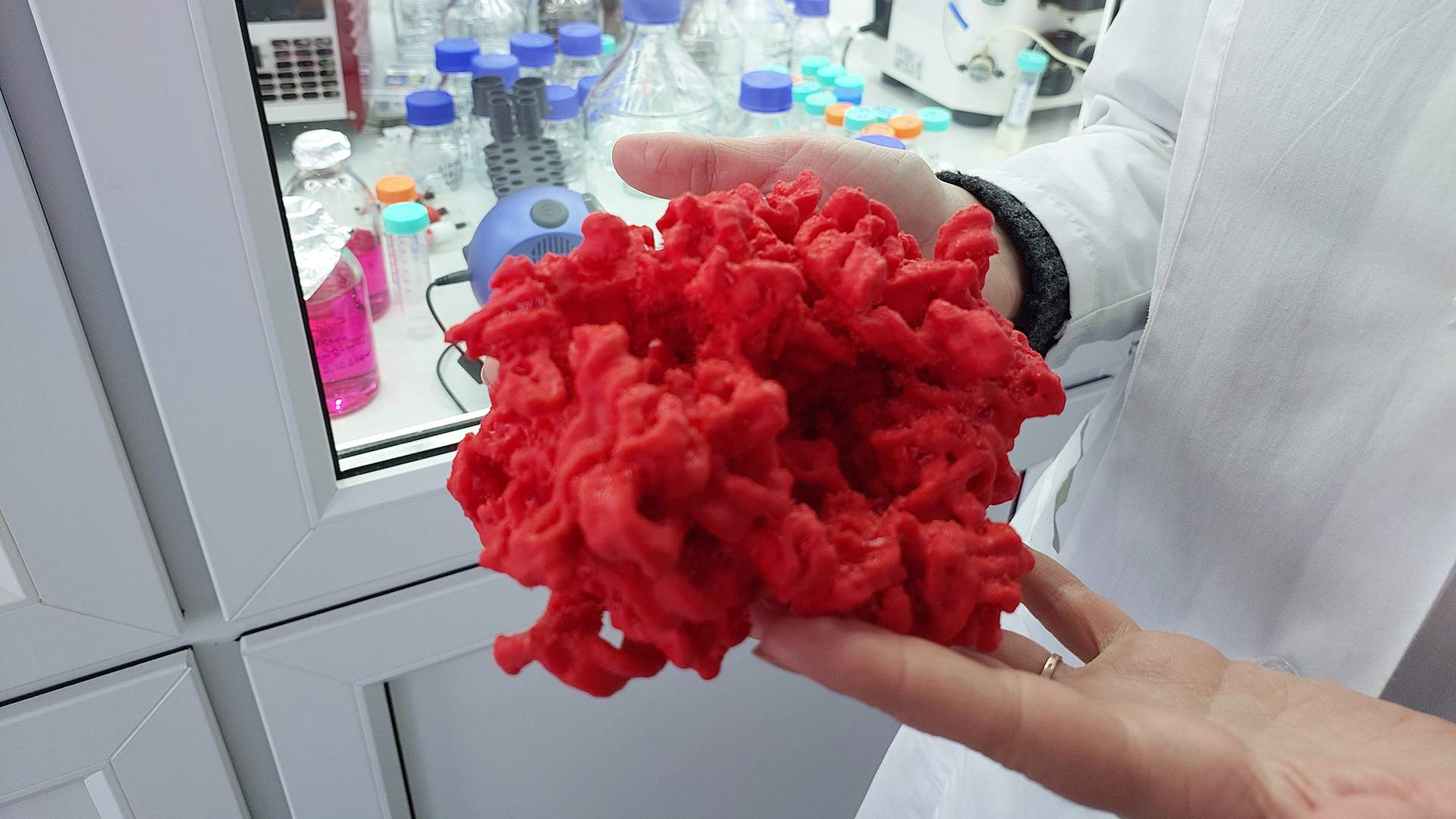- Статьи
- Science and technology
- A ruminant's perspective: antelope body substances can help beat infections
A ruminant's perspective: antelope body substances can help beat infections

Russian scientists have discovered and studied a previously unknown family of peptides that have unique antimicrobial properties and may become the basis for a new type of antibiotics. In nature, the substance is synthesized in the organisms of ruminants and is designed to protect them from infections. Once in the bacterial cell, the compound clogs the peptide channel through which the protein synthesized by the ribosome must exit. This leads to the death of the microbe. According to the developers, a drug based on such a substance will be able to bypass many resistance mechanisms of bacteria and act very quickly.
A new family of compounds
Specialists of SIC "Kurchatov Institute" (including the Department of Molecular and Radiation Biophysics SIC KI - PJPF) together with colleagues from the Institute of Bioorganic Chemistry named after Academicians MM Shemyakin and Yuri Ovchinnikov and Lomonosov Moscow State University discovered and studied a previously unknown family of antimicrobial peptides, which in the future may become the basis for the creation of a new, more effective type of antibiotics. Such substances are synthesized in the organisms of many animals to protect their hosts from bacterial infections and have already proven their effectiveness in the course of evolution. Scientists named the new family of compounds - rumicidins (from Latin Ruminantia - ruminants), as they were found in antelopes. Using a modern arsenal of methods, the rumicidins were scrutinized both structurally and functionally to determine in detail their mechanism of action on bacteria.
- Our colleagues found that there are regions in the ruminant genotype that may be responsible for the production of these antimicrobial peptides. They consist of about 30 amino acids and disrupt the bacterial ribosome, a molecular complex that synthesizes proteins and delivers them into the cell through the output peptide channel. Rumicidin "climbs" into this channel and causes plugging of the ribosome, that is, at least mechanically prevents the passage of new growing protein. But, as it turned out, the antimicrobial peptide disrupts the very process of protein synthesis on the ribosome. And proteins perform all functions in the body: building, transportation, enzymatic. Accordingly, the bacterial cell dies," said Elena Polesskova, a senior researcher at the Department of Molecular and Radiation Biophysics of the Kurchatov Institute Research Center. - JINRF Elena Polesskova.
As the expert explained, the action of most antibiotics is associated with disruption of the bacterial ribosome. But usually small molecules are used, and the new peptide is much larger in size.
- Structural study of rumicidins was carried out by cryogenic electron microscopy at the Kurchatov Resource Center of the NBICS-natural-like technologies complex. Our subgroup found out how exactly rumicidin is located in the exit channel, the contacts it forms with parts of the ribosome were found. This is key information because it suggests which elements are important for this interaction and which are not so crucial. We can change the sequence of the antimicrobial peptide in order, for example, to strengthen the strength of its contacts with the channel, or we can introduce some modifications, - said Elena Polesskova.
Scientists have yet to choose the most suitable variant of the peptide for use in medicines. And also to determine what changes in it will help it better penetrate into the cells.
Practical application of rumicidins
Research on rumicidins is extremely important because antimicrobial peptides are able to circumvent many bacterial resistance mechanisms, are non-toxic, easy to synthesize, and have a high rate of action. The compound has confirmed high efficacy in animal infection models and no side effects against human cells in vitro. Now the scientific work on their study is ongoing, the scientists explained.
According to them, the path from the laboratory to the pharmacy of the discovered active molecule usually overcomes in a decade. At the first stage during laboratory experiments to determine the mechanism of action of the compound. Then preclinical studies are conducted to prove the efficacy and lack of toxicity on rodents or other laboratory animals. After that, clinical trials on humans, consisting of several stages, begin. Only if they are successful does the substance become a drug.
Antimicrobial peptides have been studied for quite a long time, and they are very promising, as a wide range of bacteria, including antibiotic-resistant strains, aresensitive to them, said Mikhail Bolkov, a senior researcher at the Institute of Immunology and Physiology of the Ural Branch of the Russian Academy of Sciences. These compounds are likely to treat infections for which there are no drugs yet.
- Unlike conventional antibiotics, which are metabolized and pass through the liver and kidneys, these molecules have no negative impact on the human body and are safe for therapeutic use. They have already been tested in animals and now we are talking about therapeutic use in humans," he said.
Bacteria have some mutations that could theoretically lead to resistance against rumicidins. But these molecules bind to each bacterium uniquely, so it will be very difficult for them to develop typical resistance against them, the specialist emphasized.
- This kind of drugs are definitely needed by doctors, as antibiotic resistance is one of the main problems of modern medicine, - said Associate Professor of the Department of Infectious Diseases PFUR Sergei Voznesensky.
The number of such bacteria, which it is still unknown what to treat, is growing. This applies, for example, to tuberculosis, he added.
Переведено сервисом «Яндекс Переводчик»




